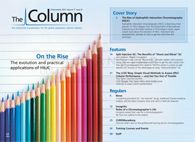Screening Procedure for “Non Banned” Drugs
A new screening procedure has been developed for the detection of common “non banned” drugs used by athletes. The method targets multiple pharmacologically active compounds by liquid chromatography-electrospray ionization coupled to tandem mass spectrometry (LC-ESI-MS-MS).
Photo Credit: Mike Kemp/Getty Images

A new screening procedure has been developed for the detection of common “non banned” drugs used by athletes. The method targets multiple pharmacologically active compounds by liquid chromatography-electrospray ionization coupled to tandem mass spectrometry (LC-ESI-MS-MS).1
The first “anti-doping list” was published in the mid-1960s and contained only substances active if taken immediately before or during competition. That list has been progressively expanded over the decades, and since 2002 the World Anti-Doping Agency (WADA) has taken over that duty. The list contains a myriad of substances from anabolic agents to hormone and metabolic modulators, which all require vigorous detection methods.
Seven selective serotonin reuptake inhibitors, four azole antifungal drugs, 19 benzodiazepine-like substances, five inhibitors of phosphodiesterase (PDE) type 4, and three inhibitors of PDE type 5 were targeted for detection in a urinary matrix. Urine samples were collected from patients currently being treated with the substances. Researchers at the Laboratorio Antidoping in Rome, Italy, used LC-ESI-MS-MS, which, once optimized, was validated according to ISO 170252 and WADA requirments.3
The targeted analytes were simultaneously identified using the newly developed LC-ESI-MS-MS procedure. The researchers believe that the application of this method can easily be included in the LC-MS-MS multi-analyte screening process currently used to detect banned compounds. This method significantly increases the information available of the (ab)use of the aforementioned classes of drugs among athletes. - L.B.
References
- M.Mazzarino et al., J. Pharm. Biomed. Anal117, 47-60 (2016).
- International Organization for Standardization, general requirements for the competence of testing and calibration laboratories, ISO: 17025.
- World Anti Doping Agency, Identification criteria for qualitative assays incorporating column chromatography and mass spectrometry, in: WADA Technical Document TD 2010IDCR, 2010, Available: http://www.wada-ama.org.

Characterizing Plant Polysaccharides Using Size-Exclusion Chromatography
April 4th 2025With green chemistry becoming more standardized, Leena Pitkänen of Aalto University analyzed how useful size-exclusion chromatography (SEC) and asymmetric flow field-flow fractionation (AF4) could be in characterizing plant polysaccharides.
Investigating the Protective Effects of Frankincense Oil on Wound Healing with GC–MS
April 2nd 2025Frankincense essential oil is known for its anti-inflammatory, antioxidant, and therapeutic properties. A recent study investigated the protective effects of the oil in an excision wound model in rats, focusing on oxidative stress reduction, inflammatory cytokine modulation, and caspase-3 regulation; chemical composition of the oil was analyzed using gas chromatography–mass spectrometry (GC–MS).










